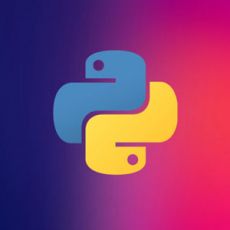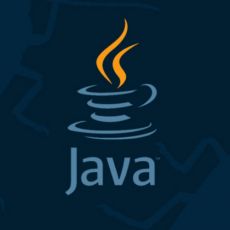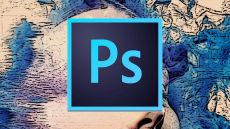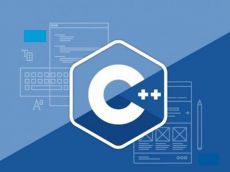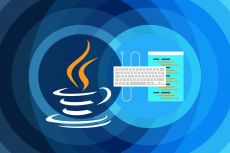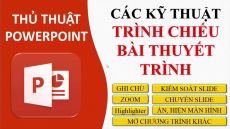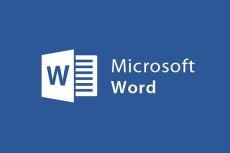400 Câu hỏi trắc nghiệm lập trình C/C++ có đáp án và lời giải chi tiết
Tổng hợp câu hỏi trắc nghiệm lập trình C/C++ có đáp án và lời giải đầy đủ nhằm giúp các bạn dễ dàng ôn tập lại toàn bộ các kiến thức. Để ôn tập hiệu quả các bạn có thể ôn theo từng phần trong bộ câu hỏi này bằng cách trả lời các câu hỏi và xem lại đáp án và lời giải chi tiết. Sau đó các bạn hãy chọn tạo ra đề ngẫu nhiên để kiểm tra lại kiến thức đã ôn.
Chọn hình thức trắc nghiệm (50 câu/60 phút)
Chọn phần
-
Câu 1:
Trong cấu trúc chương trình C++, lệnh #include dùng để làm gì?
A. Thông báo trong chương trình sử dụng các lệnh tính toán, thông báo các biến sử dụng trong thân chương trình.
B. Khai báo các câu lệnh được sử dụng trong chương trình. Phải tạo các câu lệnh trước thì mới sử dụng được trong chương trình C++.
C. Thông báo cho bộ tiền biên dịch thêm các thư viện chuẩn trong C++. Các lệnh được sử dụng trong thân chương trình phải có prototype nằm trong các thư viện chuẩn này.
D. Không có đáp án đúng.
-
Câu 2:
Trong cấu trúc chương trình C++ có bao nhiêu hàm main()?
A. 1
B. 2
C. 3
D. 4
-
Câu 3:
Lệnh cout trong C++ có tác dụng gì?
A. Là stream đầu ra chuẩn trong C++.
B. Là lệnh chú thích trong C++
C. Là stream đầu vào chuẩn của C++.
D. Là lệnh khai báo một biến.
-
Câu 4:
Lệnh cin trong C++ có tác dụng gì?
A. Là lệnh chú thích trong C++
B. Là lệnh khai báo một biến.
C. Là stream đầu ra chuẩn trong C++.
D. Là stream đầu vào chuẩn của C++.
-
Câu 5:
Kết thúc một dòng lệnh trong chương trình C++, ta sử dụng ký hiệu gì?
A. Dấu ,
B. Dấu .
C. Dấu :
D. Dấu ;
-
Câu 6:
Lệnh cout trong C++ đi kèm với cặp dấu nào?
A. >>
B. \\
C. ||
D. <<
-
Câu 7:
Để chú thích trên 1 dòng lệnh trong chương trình C++, ta dùng cặp dấu nào?
A. \* và *\
B. <<
C. //
D. >>
-
Câu 8:
Để chú thích trên nhiều dòng lệnh trong chương trình C++, ta dùng cặp dấu nào?
A. \\
B. >>
C. /* và */
D. <<
-
Câu 9:
Chú thích nào sau đây là chính xác?
A. \*Lập trình C++
B. //Lập trình C++
C. <!-Lập trình C++-->
D. \\Lập trình C++
-
Câu 10:
Cách khai báo biến nào sau đây là đúng?
A. <Kiểu dữ liệu> <Danh sách tên biến>;
B. <Danh sách tên biến> : <Kiểu dữ liệu>;
C. <Tên biến> = <Giá trị>;
D. Tất cả đầu không đúng
-
Câu 11:
What is the correct value to return to the operating system upon the successful completion of a program?
A. 0
B. -1
C. 1
D. Do not return a value
-
Câu 12:
What is the only function all C programs must contain?
A. start()
B. system()
C. main()
D. program()
-
Câu 13:
What punctuation is used to signal the beginning and end of code blocks?
A. { }
B. → and ←
C. BEGIN and END
D. ( and )
-
Câu 14:
What punctuation ends most lines of C code?
A. .
B. ;
C. '
-
Câu 15:
Which of the following is a correct comment?
A. */ Comments */
B. ** Comment **
C. /* Comment */
D. { Comment }
-
Câu 16:
Which of the following is not a correct variable type?
A. float
B. real
C. int
D. double
-
Câu 17:
Which of the following is the correct operator to compare two variables?
A. :=
B. =
C. equal
D. ==
-
Câu 18:
Which of the following is true?
A. 1
B. 66
C. -1
D. All of the above
-
Câu 19:
Which of the following is the boolean operator for logical-and?
A. &
B. &&
C. |
D. |&
-
Câu 20:
Evaluate !(1 && !(0 || 1))
A. True
B. False
C. Unevaluatable
-
Câu 21:
Which of the following shows the correct syntax for an if statement?
A. if expression
B. if { expression
C. if ( expression )
D. expression if
-
Câu 22:
What is the final value of x when the code is run?
int x; for(x = 0; x < 10; x++) { }
A. 10
B. 9
C. 0
D. 1
-
Câu 23:
When does the code block following while(x<100) execute?
A. When x is less than one hundred
B. When x is greater than one hundred
C. When x is equal to one hundred
D. While it wishes
-
Câu 24:
Which is not a loop structure?
A. for
B. do while
C. while
D. repeat until
-
Câu 25:
How many times is a do while loop guaranteed to loop?
A. 0
B. Infinitely
C. 1
D. Variable
-
Câu 26:
Which is not a proper prototype?
A. int funct(char x, char y);
B. double funct(char x)
C. void funct();
D. char x();
-
Câu 27:
What is the return type of the function with prototype: “int func(char x, float v, double t);”
A. char
B. int
C. float
D. double
-
Câu 28:
Which of the following is a valid function call (assuming the function exists)?
A. funct;
B. funct x, y;
C. funct();
D. int funct();
-
Câu 29:
Which of the following is a complete function?
A. int funct();
B. int funct(int x) {return x=x+1;}
C. void funct(int) {printf( “Hello” );
D. void funct(x) {printf( “Hello” ); }
-
Câu 30:
What is required to avoid falling through from one case to the next?
A. end;
B. break;
C. stop;
D. continue;
-
Câu 31:
What keyword covers unhandled possibilities?
A. all
B. continue
C. default
D. other
-
Câu 32:
What is the result of the following code?
void main() { int x = 0; switch(x) { case 1: printf( "One" ); case 0: printf( "Zero" ); case 2: printf( "Hello World" ); } }
A. One
B. Zero
C. Hello World
D. ZeroHello World
-
Câu 33:
Which of the following is the proper declaration of a pointer?
A. int x;
B. int &x;
C. ptr x;
D. int *x;
-
Câu 34:
Which of the following gives the memory address of integer variable a?
A. *a;
B. a;
C. &a;
D. address(a);
-
Câu 35:
Which of the following gives the memory address of a variable pointed to by pointer a?
A. a;
B. *a;
C. &a;
D. address(a);
-
Câu 36:
Which of the following gives the value stored at the address pointed to by pointer a?
A. a;
B. val(a);
C. *a;
D. &a;
-
Câu 37:
Which of the following is the proper keyword or function to allocate memory in C?
A. new
B. malloc
C. create
D. value
-
Câu 38:
Which of the following is the proper keyword or function to deallocate memory in C language?
A. free
B. delete
C. clear
D. remove
-
Câu 39:
Which of the following accesses a variable in structure b?
A. b→var;
B. b.var;
C. b-var;
D. b>var;
-
Câu 40:
Which of the following accesses a variable in a pointer to a structure, *b?
A. b→var;
B. b.var;
C. b-var;
D. b>var;
-
Câu 41:
Which of the following is a properly defined struct?
A. struct {int a;}
B. struct a_struct {int a;}
C. struct a_struct int a;
D. struct a_struct {int a;};
-
Câu 42:
Which properly declares a variable of struct foo?
A. struct foo;
B. struct foo var;
C. foo;
D. int foo;
-
Câu 43:
Which of the following correctly declares an array?
A. int arr[10];
B. int arr;
C. arr{10};
D. array arr[10];
-
Câu 44:
What is the index number of the last element of an array with 29 elements?
A. 29
B. 28
C. 0
D. Programmer-defined
-
Câu 45:
Which of the following is a two-dimensional array?
A. array arr[20][20];
B. int arr[20][20];
C. int arr[20, 20];
D. char arr[20];
-
Câu 46:
Which of the following correctly accesses the seventh element stored in foo, an array with 100 elements?
A. foo[6];
B. foo[7];
C. foo(7);
D. foo;
-
Câu 47:
Which of the following gives the memory address of the first element in array arr, an array with 100 elements?
A. arr[0];
B. arr;
C. &arr;
D. arr[1];
-
Câu 48:
Which of the following is a string literal?
A. Static String
B. “Static String”
C. ‘Static String’
D. char string[100];
-
Câu 49:
What character ends all strings?
A. ‘.’
B. ‘ ‘
C. ‘\0’
D. ‘/0’
-
Câu 50:
Which of the following reads in a string named x with one hundred characters?
A. fgets(x, 101, stdin);
B. fgets(x, 100, stdin);
C. readline(x, 100, ‘\n’);
D. read(x);
